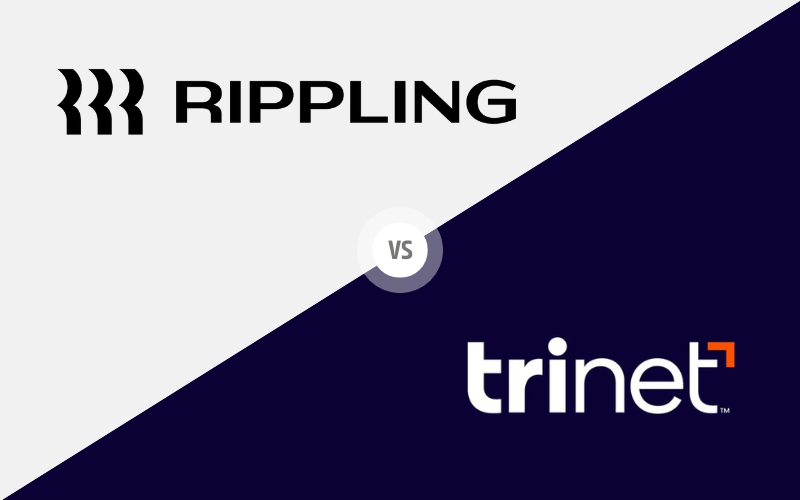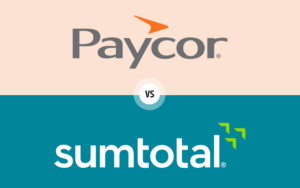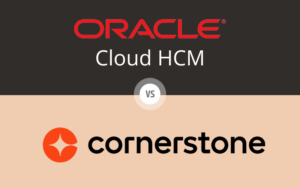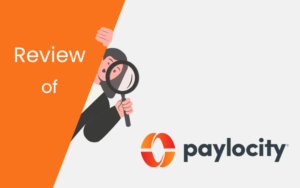When considering Rippling vs TriNet for your company’s human capital management (HCM) needs, it’s important to understand how each platform can support your specific HR operations. Both Rippling and TriNet offer robust solutions designed to streamline the complexities of modern workforce management, but they cater to different types of businesses and offer distinct advantages. In this blog post, we will delve into a comprehensive comparison of the two systems, covering key aspects such as user interface and experience, core HR functions, payroll management, and more, to help you make an informed decision on the best HCM solution for your organization.
Table of Contents
User Interface and User Experience
When comparing Rippling and TriNet, the user interface (UI) and user experience (UX) are crucial factors to consider. Both platforms streamline HR processes, but they take distinctly different approaches to UI and UX.

Rippling User Interface and User Experience
Rippling offers a modern, visually engaging interface that prioritizes user-friendliness. Its dashboard is clean and intuitive, allowing for easy navigation across various features with minimal training. The customizable layout enables HR teams to tailor the interface to their specific needs.
Key Features of Rippling UI/UX:
- Customization: Users can personalize the dashboard with widgets and shortcuts, enhancing efficiency and reducing time spent on common tasks.
- Visual Design: The interface employs a sleek, minimalistic style, offering a pleasant and engaging user experience.
- Ease of Use: Designed to be intuitive, Rippling significantly reduces the learning curve for new users and minimizes the need for extensive training.
TriNet User Interface and User Experience
TriNet adopts a more traditional UI approach, focusing on comprehensive functionality suitable for larger organizations with complex HR needs. While it offers robust capabilities, mastering TriNet’s extensive features may require more time and effort.
Key Features of TriNet UI/UX:
- Functionality: The platform includes a wide array of features and options, accommodating detailed HR management tasks.
- Navigation: While extensive, the interface is logically organized. However, some users may find it challenging to navigate due to its complexity.
- Professional Design: The design prioritizes functionality with a professional and straightforward aesthetic. Some users appreciate this approach, while others find the UI somewhat dated.
Comparison and Conclusion
The comparison between Rippling and TriNet reveals significant contrasts in their UI and UX design philosophies, catering to different organizational needs and preferences.
Rippling is particularly well-suited for small to medium-sized businesses. Its strength lies in its simplicity and the ability to get teams up and running quickly without a steep learning curve. This platform is ideal for organizations that need an effective, straightforward solution that doesn’t require deep technical skills to manage. The visual and customizable nature of Rippling’s interface often leads to higher user engagement and satisfaction, crucial for teams with limited IT support.
TriNet, in contrast, is designed for larger enterprises that need a robust and scalable solution capable of handling complex HR functionalities across multiple departments and geographies. The depth of its features supports extensive customization and integration options, which are vital for organizations with diverse and sophisticated HR processes. While its learning curve is steeper, the investment in training is often justified by the breadth of capabilities and the control it offers larger organizations.
Ultimately, the decision between Rippling and TriNet will depend on the scale of your operations and the complexity of your HR needs. If your organization values a sleek, user-friendly interface for quicker adoption and efficient daily management, Rippling is the advantageous choice. However, if your needs lean towards comprehensive HR functionalities and your organization has the resources to invest in mastering a more complex system, TriNet may be the preferable option. This nuanced understanding will guide you in choosing the platform that best aligns with your strategic goals and user expectations.
Core HR Functions
When comparing Rippling and TriNet, understanding their core HR functions is crucial. These foundational features are essential to any Human Capital Management (HCM) platform, and each system offers unique capabilities designed to streamline HR operations and enhance organizational efficiency.

Rippling Core HR Functions
Rippling excels in providing a seamless and integrated experience for managing core HR functions. It’s particularly well-suited for small to medium-sized businesses seeking an all-in-one solution that automates essential HR tasks.
Key Features of Rippling Core HR Functions:
- Automated Onboarding: Streamlines the new hire process with efficient workflows that ensure all necessary paperwork and tasks are completed promptly.
- Employee Self-Service: Empowers employees to manage their personal information, benefits, and other HR-related tasks, significantly reducing the administrative burden on HR teams.
- Comprehensive Compliance Management: Automatically keeps up with various compliance requirements, minimizing the risk of errors and potential penalties.
TriNet Core HR Functions
TriNet offers robust core HR functionalities that cater to larger organizations or those with complex HR needs. Its platform is designed to handle a diverse workforce, including full-time, part-time, and contract employees across various locations.
Key Features of TriNet Core HR Functions:
- Detailed Employee Records: Manages an extensive database of employee information, accommodating the complexities of a large and diverse workforce.
- Advanced Benefits Management: Supports a wide range of benefits plans and provides expert advice, facilitating tailored benefits offerings for diverse employee populations.
- Enhanced Compliance Tools: Offers sophisticated tools to help manage compliance with state and federal regulations, including ACA and FMLA, crucial for organizations operating across multiple jurisdictions.
Comparison and Conclusion
The comparison between Rippling and TriNet reveals distinct advantages for different organizational needs. Rippling shines in its ability to provide a streamlined, user-friendly system that integrates various HR functions into a single platform. Its automation capabilities make it an excellent choice for improving efficiency and reducing administrative overhead, particularly for smaller to medium-sized businesses.
TriNet, on the other hand, is tailored for larger companies or those with more complex HR requirements. Its strengths lie in its ability to manage diverse employee needs and ensure compliance across multiple jurisdictions, making it ideal for organizations with a broad operational reach.
Ultimately, the choice between Rippling and TriNet will depend on your organization’s specific needs. If simplicity and integration in core HR functions are your priority, Rippling may be the better choice. However, if your organization requires a robust platform capable of handling complex HR functions at scale, TriNet offers the depth and flexibility needed to meet these demands.
Both platforms provide comprehensive solutions for core HR functions, but they cater to different organizational sizes and complexities. Consider your company’s current needs and future growth plans when making your decision to ensure the HCM platform you choose can support your organization’s evolving requirements.
Payroll Management
When analyzing payroll management systems, the Rippling vs TriNet comparison reveals significant differences in how each platform handles this crucial aspect of HR. Payroll management is fundamental for ensuring accurate and timely compensation, alongside compliance with taxation and employment laws.

Rippling Payroll Management
Rippling provides a highly automated and efficient payroll management system that integrates seamlessly with its other HR functions. This integration simplifies the payroll process, from time tracking to final payment, making it ideal for businesses of various sizes that prioritize efficiency and accuracy.
Key Features of Rippling Payroll Management:
- Automated Payroll Processes: Rippling automates the entire payroll process, reducing the possibility of human error and saving time.
- Tax Compliance and Filings: Automatically handles all payroll-related tax filings and compliance updates, ensuring that businesses meet all regional and federal regulations without manual intervention.
- Flexible Payment Options: Supports various payment methods, including direct deposit and checks, providing flexibility for both employers and employees.
- Global Payroll Capabilities: Offers the ability to manage international payroll, catering to businesses with a global workforce.
TriNet Payroll Management
TriNet offers a robust payroll management system that caters to the needs of larger organizations or those with more complex payroll requirements. TriNet’s system is designed to handle multi-state and international payrolls, making it suitable for businesses operating across various jurisdictions.
Key Features of TriNet Payroll Management:
- Customizable Payroll Solutions: Provides extensive options to customize payroll processes according to specific business needs.
- Comprehensive Tax and Compliance Service: Offers expert assistance with payroll taxes and compliance, including local, state, and federal regulations.
- Integrated Employee Access: Employees can access their pay stubs and tax information through a secure online portal, enhancing transparency and convenience.
- Advanced Reporting: Delivers detailed payroll reports and analytics for better financial management and decision-making.
Comparison and Conclusion
The choice between Rippling and TriNet for payroll management should be based on the specific payroll challenges your organization faces. Rippling is an excellent option for businesses seeking a straightforward, automated solution that integrates well with other HR functions. Its user-friendly interface, automation features, and global payroll capabilities make it suitable for a wide range of businesses, from small startups to growing enterprises.
In contrast, TriNet’s payroll management system is more suitable for larger companies or those that require detailed control over their payroll processes, including handling complex scenarios such as multi-state or international payroll. TriNet provides the flexibility and expert support needed to manage diverse payroll requirements effectively, though it’s often noted to be more expensive than Rippling.
Ultimately, selecting between Rippling and TriNet for payroll management will depend on your organization’s size, complexity, and specific payroll needs. Rippling offers simplicity, automation, and global capabilities at a generally lower price point. TriNet, however, provides robust customization and expert compliance support, essential for larger or more complex payroll environments.
When making your decision, consider factors such as:
- The size and growth trajectory of your organization
- The complexity of your payroll needs (e.g., multi-state, international)
- Your budget for payroll management solutions
- The level of automation and integration you require
- The importance of expert support and customization options
By carefully evaluating these factors against the strengths of each platform, you can choose the payroll management solution that best fits your organization’s current needs and future growth plans.
Time and Attendance Tracking
Effective time and attendance tracking is crucial for any organization, ensuring accurate payroll processing and compliance with labor laws. When comparing Rippling vs TriNet, each offers distinct features that cater to different business needs.

Rippling Time and Attendance Tracking
Rippling provides an integrated time and attendance system that simplifies the recording and management of employee hours. This system is particularly beneficial for small to medium-sized businesses looking for an easy-to-use solution that integrates seamlessly with payroll and other HR functions.
Key Features of Rippling Time and Attendance Tracking:
- Automated Time Tracking: Employees can clock in and out using a variety of devices, with data automatically syncing with payroll, significantly reducing errors and administrative work.
- Mobile Compatibility: Offers a user-friendly mobile app that allows employees to track their time remotely, ideal for businesses with remote or field workers.
- Real-Time Alerts: Managers receive instant notifications for any discrepancies or anomalies, enabling quick resolution and ensuring compliance with labor regulations.
TriNet Time and Attendance Tracking
TriNet’s time and attendance solutions are designed to handle complex scenarios, making them suitable for larger organizations or those with unique requirements such as flexible schedules or multiple shifts.
Key Features of TriNet Time and Attendance Tracking:
- Customizable Rules and Policies: Businesses can set up tailored rules for overtime, shifts, and leave, accommodating specific operational needs across various industries.
- Advanced Scheduling: Supports sophisticated scheduling needs, integrating with calendar systems and providing tools for shift swapping and scheduling across multiple locations or time zones.
- Comprehensive Reporting: Offers detailed reports and analytics that help businesses monitor attendance patterns, labor costs, and compliance with working hours regulations, facilitating data-driven decision-making.
Comparison and Conclusion
Choosing between Rippling and TriNet for time and attendance tracking depends on the scale and complexity of your business needs. Rippling excels in providing a straightforward, integrated solution that simplifies time tracking and enhances overall efficiency. Its user-friendly interface and automation features are particularly well-suited for small to mid-sized businesses aiming to streamline their operations without the need for complex customizations.
On the other hand, TriNet is ideal for larger organizations or those with more sophisticated scheduling and compliance requirements. Its ability to handle complex scheduling scenarios and provide in-depth customization makes it a robust solution for businesses needing detailed control over workforce management across multiple locations or with diverse employee types.
Both platforms offer robust capabilities to improve the accuracy and efficiency of time and attendance tracking. Rippling stands out for its seamless integration and ease of use, making it an excellent choice for growing businesses. TriNet, with its advanced features and customization options, is better suited for enterprises with complex workforce management needs.
When making your decision, consider factors such as:
- The size and growth trajectory of your organization
- The complexity of your scheduling needs
- The level of customization required for your time and attendance policies
- The importance of mobile accessibility for your workforce
- The depth of reporting and analytics you need for decision-making
By carefully evaluating these factors against the strengths of each platform, you can choose the time and attendance tracking solution that best aligns with your organization’s current needs and future growth plans.
Benefits Administration
Benefits administration is a critical component of any HR platform, significantly impacting employee satisfaction and retention. In this comparison of Rippling vs TriNet, we explore how each platform manages benefits and the unique features they offer.

Rippling Benefits Administration
Rippling simplifies benefits administration through a user-friendly interface that integrates directly with payroll and other HR modules. This integration ensures that any changes in benefits are automatically updated across the system, making it ideal for small to medium-sized businesses that value efficiency and accuracy.
Key Features of Rippling Benefits Administration:
- Automated Benefits Sync: Rippling automatically syncs benefits information with payroll, ensuring accurate deductions and compliance.
- Wide Range of Benefits Options: Offers a comprehensive selection of benefits, including health, dental, vision, and retirement plans, which can be customized to suit the needs of the business and its employees.
- Employee Self-Service Portal: Allows employees to easily select benefits and manage their plans, enhancing user satisfaction and reducing administrative burden.
- Integration Capabilities: Seamlessly integrates with other systems, enhancing overall HR management efficiency.
TriNet Benefits Administration
TriNet offers a robust benefits administration solution that caters to larger organizations with complex needs. Its platform provides detailed management of a diverse array of benefits packages, supported by expert advice and compliance assistance, making it suitable for companies that operate in multiple states or countries.
Key Features of TriNet Benefits Administration:
- Expert Support and Compliance: TriNet provides access to benefits experts who help manage compliance with local, state, and federal regulations, reducing the risk of penalties.
- Customizable Benefits Packages: Supports the creation of tailored benefits packages that can address the specific needs of various employee demographics.
- Integrated Employee Wellness Programs: Includes options for integrating wellness programs, which can improve overall employee well-being and productivity.
- Advanced Reporting: Offers detailed reports and analytics to help businesses monitor benefits utilization and costs.
Comparison and Conclusion
Deciding between Rippling and TriNet for benefits administration depends largely on the size of your business and the complexity of your benefits needs. Rippling offers an integrated, straightforward approach that is easy to manage and highly automated, perfect for smaller businesses looking to streamline their benefits administration without extensive HR resources.
On the other hand, TriNet’s advanced features and expert support make it ideal for larger organizations that require a more sophisticated approach to benefits management. Its ability to handle complex, multi-state compliance and offer customized benefits packages is particularly valuable for companies with diverse and extensive operational needs.
Ultimately, your choice between Rippling and TriNet should align with your company’s specific requirements for benefits administration. Rippling will serve you well if you need simplicity and integration, while TriNet is better suited for handling larger, more complex benefits structures with a high degree of customization.
When making your decision, consider factors such as:
- The size and growth trajectory of your organization
- The complexity of your benefits needs
- Your budget for benefits administration solutions
- The level of integration required with other HR systems
- The importance of expert support and compliance assistance
By carefully evaluating these factors against the strengths of each platform, you can choose the benefits administration solution that best fits your organization’s current needs and future growth plans.
Performance Management
Performance management is a crucial aspect of HR that helps organizations ensure employees are engaged and productive. While specific performance management features for Rippling and TriNet are not detailed in our current information, we can discuss how these platforms approach HR management in general, which can impact performance management processes.

Rippling HR Management
Rippling offers a comprehensive HR management system that integrates various HR functions into a single platform. While we don’t have specific information about its performance management features, Rippling’s overall approach to HR suggests a focus on user-friendly, streamlined processes.
Key Features of Rippling HR Management:
- Integrated Platform: Combines various HR functions, potentially allowing for more cohesive management of employee data and processes.
- User-Friendly Interface: Known for its intuitive design, which could facilitate easier adoption of HR processes, including performance-related tasks.
- Automation Capabilities: Offers automation in various HR areas, which might extend to certain aspects of performance management.
TriNet HR Management
TriNet provides a robust HR solution designed to handle complex HR needs of larger organizations. While specific performance management features are not detailed in our current information, TriNet’s overall approach suggests a comprehensive suite of HR tools.
Key Features of TriNet HR Management:
- Comprehensive HR Services: Offers a wide range of HR functionalities, which may include tools relevant to performance management.
- Customization Options: Known for providing customizable solutions, which could potentially extend to performance management processes.
- Expert Support: Provides access to HR specialists, which could be beneficial for developing and implementing performance management strategies.
Comparison and Conclusion
When considering Rippling vs TriNet for HR management, including potential performance management needs, several factors come into play:
- Company Size and Complexity: Rippling is often favored by small to medium-sized businesses for its user-friendly approach and cost-effectiveness. TriNet, on the other hand, is frequently chosen by larger organizations with more complex HR needs.
- Integration and Ease of Use: Rippling is known for its seamless integration of various HR functions and user-friendly interface. This could potentially streamline performance-related processes if such features are available.
- Customization and Support: TriNet offers more extensive customization options and expert support, which could be beneficial for organizations requiring tailored performance management solutions.
- Cost Considerations: Rippling is generally considered more cost-effective, especially for smaller businesses, while TriNet may have higher costs but offers more comprehensive services.
Ultimately, the choice between Rippling and TriNet should be based on your organization’s specific needs, size, and resources. While we don’t have detailed information about their performance management features, both platforms offer comprehensive HR solutions that could support various aspects of employee management and development.
To make an informed decision, it’s recommended to:
- Request demos from both Rippling and TriNet to see their current offerings
- Inquire specifically about their performance management capabilities
- Consider how each platform’s overall HR approach aligns with your organization’s performance management goals
By carefully evaluating these factors, you can choose the HR management solution that best supports your organization’s performance management needs and overall HR strategy.
Talent Management and Recruiting
Talent management and recruiting are essential for attracting and retaining the right talent, which fundamentally shapes the capabilities and success of any organization. This section explores how Rippling vs TriNet handles these crucial HR functions, highlighting their respective strengths and features.

Rippling Talent Management and Recruiting
Rippling provides a comprehensive talent management and recruiting module that integrates seamlessly with its overall HR platform. This integration streamlines the recruiting process, from job posting to onboarding, making it highly efficient for small to medium-sized businesses.
Key Features of Rippling Talent Management and Recruiting:
- Automated Recruiting Workflows: Streamlines the hiring process with automated workflows for job postings, applicant tracking, and interview scheduling, reducing the administrative burden.
- Unified Candidate Profiles: Consolidates candidate information into a single, easy-to-navigate profile, enhancing the ability to make informed hiring decisions quickly.
- Onboarding Integration: Seamlessly transitions successful candidates to employee status, integrating with other HR functions like payroll and benefits setup.
TriNet Talent Management and Recruiting
TriNet offers a robust talent management and recruiting solution designed to meet the needs of larger organizations or those with more complex recruitment requirements. It provides extensive tools to manage the end-to-end recruitment process and develop talent once onboard.
Key Features of TriNet Talent Management and Recruiting:
- Advanced Applicant Tracking System (ATS): Offers a sophisticated ATS that helps in managing large volumes of applicants and streamlining the selection process.
- Diverse Job Posting and Recruitment Marketing: Supports broad job distribution and effective recruitment marketing strategies to attract top talent.
- Detailed Analytics and Reporting: Provides insights into recruitment metrics and talent management processes, helping organizations refine their strategies based on data-driven decisions.
Comparison and Conclusion
When deciding between Rippling and TriNet for talent management and recruiting, consider the size of your business and the complexity of your recruitment and talent development needs.
Rippling is well-suited for businesses that need an efficient, straightforward system that can handle all aspects of talent management and recruiting without requiring extensive HR expertise. Its automated features and seamless integration with other HR functions make it ideal for SMEs looking to optimize their recruiting and talent management processes.
Conversely, TriNet is tailored for larger organizations or those requiring a more sophisticated approach to talent management and recruiting. Its comprehensive ATS and detailed analytics capabilities are invaluable for businesses that face complex recruiting challenges and need to manage a large, diverse workforce effectively.
In summary, the choice between Rippling and TriNet will largely depend on the specific demands of your talent management and recruiting strategies. Rippling offers simplicity and integration for smaller businesses, while TriNet provides the depth and breadth needed to support complex, large-scale recruitment efforts.
Learning and Development
Learning and development (L&D) are vital for nurturing a knowledgeable and skilled workforce, enhancing employee satisfaction, and driving organizational success. This analysis focuses on how Rippling vs TriNet supports these critical HR functions with their respective features and capabilities.

Rippling Learning and Development
Rippling offers an integrated platform that includes L&D functionalities, making it suitable for small to medium-sized businesses to administer and track employee training programs. This system is designed to be user-friendly, allowing companies to manage training alongside other HR functions.
Key Features of Rippling Learning and Development:
- Integrated Learning Management: Rippling’s L&D tools are likely integrated into its broader HR platform, facilitating seamless access to training resources alongside other employee data.
- Customizable Training Options: Given Rippling’s focus on customization, it’s probable that businesses can tailor training content to meet specific job requirements or professional development needs.
- Progress Tracking: Rippling provides tools for tracking various HR metrics, which would likely extend to monitoring employee progress through training materials.
TriNet Learning and Development
TriNet ‘s approach to learning and development caters to larger organizations that require a more robust and scalable L&D solution. It offers a comprehensive suite of HR tools that likely includes advanced L&D features.
Key Features of TriNet Learning and Development:
- Extensive Resources: TriNet likely provides access to a wide range of training resources, covering various topics from compliance to skill development, suitable for diverse workforce needs.
- Advanced Reporting and Analytics: TriNet offers detailed analytics for various HR functions, which would include insights on training effectiveness and employee progress.
- Customizable Learning Solutions: Given TriNet ‘s focus on customization for larger enterprises, it’s likely that they support the creation of tailored learning paths for employees.
Comparison and Conclusion
Choosing between Rippling and TriNet for learning and development should be based on your organization’s size, the complexity of your L&D needs, and the strategic importance of employee development within your business model.
Rippling is likely ideal for smaller organizations or those with straightforward training needs. Its integrated approach and user-friendly interface make it easy to implement and manage, providing a practical solution for companies with limited L&D resources.
On the other hand, TriNet is well-suited for larger organizations or those requiring comprehensive and scalable L&D solutions. Its robust HR offerings and advanced analytics capabilities are beneficial for businesses that need to provide widespread training across multiple locations or for various job functions.
Ultimately, the decision between Rippling and TriNet will hinge on the specific learning and development demands of your company. Rippling offers an efficient and easily manageable system for SMEs, while TriNet provides the depth and flexibility needed for larger, more complex organizations.
When making your decision, consider:
- The size and growth trajectory of your organization
- The complexity of your L&D needs
- Your budget for L&D solutions
- The level of customization and analytics you require
- The importance of integrating L&D with other HR functions
By carefully evaluating these factors against the strengths of each platform, you can choose the learning and development solution that best fits your organization’s current needs and future growth plans.
Reporting and Analytics
In today’s data-driven business environment, robust reporting and analytics capabilities are essential for any HR platform. This section evaluates how Rippling vs TriNet addresses these needs, offering insights into which platform might better suit different organizational requirements.

Rippling Reporting and Analytics
While specific details about Rippling’s reporting and analytics features are not available, Rippling is known for its user-friendly interface and comprehensive HR management capabilities. These attributes suggest that its reporting and analytics tools are designed to be accessible and useful for small to medium-sized businesses.
Key Features of Rippling Reporting and Analytics:
- Customizable Dashboards: Likely allows users to create custom dashboards to visualize key HR metrics at a glance, tailoring the information to specific needs and preferences.
- Real-Time Data: Rippling is known for providing real-time data updates, ensuring that HR teams and managers have the most current information when making decisions.
- Automated Report Generation: Likely includes features for automated generation of standard reports such as headcount, payroll, and benefits utilization, saving time and reducing the likelihood of errors.
TriNet Reporting and Analytics
TriNet’s reporting and analytics are geared towards larger organizations or those with more complex data needs. While specific details are not available, TriNet is known for offering advanced HR solutions, which likely include robust analytics capabilities.
Key Features of TriNet Reporting and Analytics:
- Advanced Analytics Tools: Likely provides sophisticated analytics tools that can parse complex datasets to deliver deeper insights into workforce dynamics and trends.
- Custom Report Building: Likely allows users to build custom reports from scratch, offering flexibility to focus on unique metrics that matter most to the organization.
- Integration with External Systems: TriNet is known for its ability to integrate data from external systems, providing a more comprehensive view of business metrics alongside HR data.
Comparison and Conclusion
When comparing Rippling vs TriNet for reporting and analytics, the choice largely depends on the size of your organization and the complexity of your data analysis needs.
Rippling is ideal for SMEs that require straightforward, easy-to-use reporting tools that provide essential insights without the need for extensive customization. Its user-friendly interface and real-time data capabilities ensure that smaller businesses can remain agile and informed.
Conversely, TriNet is better suited for larger organizations that require robust analytical tools capable of handling complex datasets and providing predictive insights. TriNet’s ability to customize reports and integrate with other business systems makes it a powerful tool for enterprises that rely heavily on data-driven decision-making.
Selecting between Rippling and TriNet will ultimately depend on your specific reporting and analytics needs. Rippling offers simplicity and immediacy, which is perfect for smaller companies, while TriNet provides comprehensive and customizable analytics, ideal for larger organizations with complex requirements.
Additional Considerations
- User Satisfaction: According to available data, Rippling has a higher user satisfaction rating (97%) compared to TriNet (85%).
- Likelihood to Recommend: Rippling has a higher likelihood to recommend score (8.1) compared to TriNet (1.6).
- Pricing Model: Rippling offers a more straightforward, cost-effective pricing model compared to TriNet.
- HR Features and Services: Rippling is noted for better HR features and services, robust automation tools, and a broader number of integrations compared to TriNet.
By carefully evaluating these factors against the strengths of each platform, you can choose the reporting and analytics solution that best fits your organization’s current needs and future growth plans.
Compliance and Security
Compliance and security are critical aspects of any Human Capital Management (HCM) system, ensuring that organizational practices adhere to relevant laws and regulations while safeguarding sensitive employee data. This section examines the capabilities of Rippling vs TriNet in managing these vital functions.

Rippling Compliance and Security
Rippling takes a proactive approach to compliance and security, offering tools that help small to medium-sized businesses stay up-to-date with the latest regulations. Rippling’s platform is designed to automate many compliance-related tasks, significantly reducing the risk of non-compliance.
Key Features of Rippling Compliance and Security:
- Automated Compliance Updates: Rippling’s system integrates the latest compliance updates automatically, ensuring that HR practices remain compliant with minimal manual intervention.
- Robust Data Encryption: Employs strong encryption protocols to protect sensitive employee data both at rest and in transit.
- Regular Security Audits: Conducts regular security audits and penetration tests to identify and address potential vulnerabilities.
TriNet Compliance and Security
TriNet offers comprehensive compliance and security features that are well-suited for larger organizations or those operating in highly regulated industries. TriNet’s extensive experience in dealing with complex compliance challenges makes it a reliable choice for businesses that need rigorous security measures and compliance management.
Key Features of TriNet Compliance and Security:
- Custom Compliance Support: Provides tailored compliance support that aligns with the specific needs of your industry and geographic location, ensuring all legal requirements are met.
- Advanced Security Measures: Implements advanced security protocols, including multi-factor authentication and continuous monitoring systems, to protect against unauthorized access and data breaches.
- Expert Legal Resources: Offers access to legal experts who can provide guidance on compliance matters, reducing the burden on internal teams.
Comparison and Conclusion
When deciding between Rippling and TriNet for compliance and security, the choice should reflect your organization’s size, industry, and specific regulatory challenges.
Rippling is ideal for SMEs looking for a secure, compliant HR platform that manages compliance with minimal oversight. Its automated updates and strong security practices are well-suited for businesses with straightforward compliance needs.
TriNet, however, is better suited for larger enterprises or those in sectors with complex regulatory requirements. Its customized compliance support and access to legal expertise provide a high level of assurance, making it the preferred option for businesses that face significant compliance and security challenges.
Ultimately, selecting Rippling or TriNet will depend on the specific compliance and security demands of your business. Rippling offers ease of use and automated compliance features ideal for less complex environments, while TriNet provides robust, tailored solutions for organizations requiring extensive compliance management and security measures.
When making your decision, consider:
- The size and complexity of your organization
- The specific regulatory requirements of your industry
- Your internal resources for managing compliance and security
- The level of customization and expert support you require
- The importance of automated compliance updates vs. tailored compliance solutions
By carefully evaluating these factors against the strengths of each platform, you can choose the compliance and security solution that best fits your organization’s current needs and future growth plans.
Integration and Compatibility
In the competitive landscape of Human Capital Management (HCM) software, integration and compatibility are crucial for ensuring that different systems within an organization can communicate effectively. This analysis dives into how Rippling vs TriNet handles these essential features, providing insights into their flexibility and ability to integrate with other business systems.

Rippling Integration and Compatibility
Rippling stands out for its exceptional integration capabilities, particularly well-suited for small to medium-sized businesses that utilize a variety of software tools. Rippling’s platform is designed to seamlessly connect with numerous third-party applications, from accounting software to performance management systems, enhancing overall workflow efficiency.
Key Features of Rippling Integration and Compatibility:
- Extensive Third-Party Integrations: Rippling offers plug-and-play integrations with over 500 popular business applications, including major CRM, ERP, and project management tools.
- API Access: Provides robust API access, allowing businesses to create custom integrations and automate workflows across different systems.
- Unified Data Management: Ensures that data flows seamlessly between Rippling and other business systems, reducing manual data entry and potential errors.
TriNet Integration and Compatibility
TriNet provides comprehensive integration solutions designed to meet the needs of larger organizations or those with more complex systems landscapes. TriNet’s approach focuses on ensuring that its HCM software can integrate deeply with specialized industry tools and legacy systems, which is essential for larger enterprises with established IT infrastructures.
Key Features of TriNet Integration and Compatibility:
- Custom Integration Services: TriNet offers customized integration services that can be tailored to the specific needs of an organization, ensuring compatibility with existing systems.
- Scalable Architecture: Features a scalable architecture that supports a wide range of integrations as a company grows and its systems evolve.
- Comprehensive Data Sync: Facilitates comprehensive data synchronization across platforms, ensuring that all systems within the organization are up-to-date and accurate.
Comparison and Conclusion
Choosing between Rippling and TriNet for integration and compatibility depends largely on your organization’s current technological ecosystem and future needs.
Rippling is ideal for SMEs that need a flexible, easily integrable solution capable of connecting with a broad array of applications without requiring extensive IT support. Its user-friendly interface and extensive third-party integrations make it an excellent choice for businesses looking to enhance their operational efficiency quickly.
Conversely, TriNet is more suitable for larger organizations or those that require bespoke integration capabilities. Its ability to provide customized integration solutions and handle complex data synchronization makes it a strong option for companies with specific integration requirements or those operating in specialized industries.
In summary, Rippling offers extensive, ready-made integrations ideal for businesses seeking simplicity and broad compatibility, while TriNet provides the depth and customization needed for complex, large-scale integration scenarios. Selecting the right platform should align with your integration needs and the scale of your operations.
Customer Support and Service
Effective customer support and service are indispensable for any Human Capital Management (HCM) system, as they ensure that any issues users face are resolved promptly and efficiently. This examination focuses on the customer support capabilities of Rippling vs TriNet, based on available information.

Rippling Customer Support and Service
Rippling offers a range of customer support options designed to assist businesses efficiently. While specific details are limited, Rippling’s support system aims to help clients maximize the use of their HCM platform with minimal downtime.
Key Features of Rippling Customer Support and Service:
- Multiple Support Channels: Provides support through chat and email, with phone support available via its paid HR help desk/advisory solution.
- Online Resources: Likely features online resources to help users address common issues and questions.
- Support Rating: Has a support rating of 8.1 out of 10 based on 613 ratings, indicating generally positive user experiences with their support services.
TriNet Customer Support and Service
TriNet’s customer support is designed to meet the needs of various organizations. While specific details are limited, TriNet aims to provide comprehensive support for businesses using their HCM platform.
Key Features of TriNet Customer Support and Service:
- Support Channels: Offers an online Zen Assistant tool, chat, email, and phone support (though accessing phone support may require additional steps).
- Support Rating: Has a support rating of 8.8 out of 10 based on 42 ratings, suggesting high satisfaction with their support services.
- Comprehensive Assistance: Likely provides assistance for various aspects of their HCM system, though specific details are not available in the provided information.
Comparison and Conclusion
When choosing between Rippling and TriNet for customer support and service, consider the following:
- Support Channels: Both platforms offer multiple support channels, including chat and email. Rippling provides phone support through a paid service, while TriNet offers phone support with some additional steps required.
- User Ratings: TriNet has a slightly higher support rating (8.8/10) compared to Rippling (8.1/10), though it’s important to note the significant difference in the number of ratings (42 vs. 613).
- Company Size Considerations: While not specific to support features, general comparisons suggest that Rippling may be more suitable for small to medium-sized businesses, while TriNet might be better equipped for larger organizations or those with more complex needs.
Ultimately, the choice between Rippling and TriNet for customer support and service should be based on your organization’s specific needs, the importance of different support channels to your team, and the overall fit of the HCM platform with your business requirements.
To make an informed decision, consider:
- Reaching out to both Rippling and TriNet for detailed information about their current support offerings
- Reading recent user reviews to get up-to-date insights on support experiences
- Evaluating which support channels are most critical for your team’s efficiency
By carefully assessing these factors, you can choose the HCM solution that not only meets your functional needs but also provides the level of support necessary for your organization’s success.
Pricing and Cost-effectiveness
Understanding the pricing and cost-effectiveness of Human Capital Management (HCM) systems is crucial for businesses aiming to maximize their HR budget while obtaining the necessary features and support. This section explores the pricing structures and cost-effectiveness of Rippling vs TriNet to help businesses make informed financial decisions.

Rippling Pricing and Cost-effectiveness
Rippling offers a flexible pricing structure that can be particularly appealing for small to medium-sized businesses looking for customizable HR solutions.
Key Features of Rippling Pricing and Cost-effectiveness:
- Modular Pricing: Rippling’s services are priced per module, allowing businesses to choose and pay for only the features they need.
- Transparent Costs: Pricing is transparent, with no hidden fees, making it easier for businesses to plan their budgets effectively.
- Fixed-Rate Administrative Fee: Rippling offers a fixed-rate administrative fee, providing predictability in costs.
- High User Satisfaction: Rippling has a user satisfaction rating of 97%, suggesting strong value for money.
For more information about pricing, please visit Rippling’s website.
TriNet Pricing and Cost-effectiveness
TriNet is generally considered one of the more expensive Professional Employer Organizations (PEOs) in the industry, offering comprehensive service packages that include various HR functions.
Key Features of TriNet Pricing and Cost-effectiveness:
- Comprehensive Packages: Offers bundled services that include benefits administration, compliance, payroll, and more.
- Potential Hidden Costs: Some users report a lack of pricing transparency and the presence of hidden fees.
- Expert Support Included: The cost includes access to HR expertise and compliance support, which can be valuable for complex HR needs.
- User Satisfaction: TriNet has a user satisfaction rating of 85%, which is lower than Rippling but still indicates positive user experiences.
For more information about pricing, please visit TriNet’s website.
Comparison and Conclusion
When comparing Rippling vs TriNet in terms of pricing and cost-effectiveness, businesses must consider both immediate costs and long-term value:
- Pricing Structure: Rippling offers a more flexible, modular pricing approach, while TriNet provides comprehensive packages that may be less customizable.
- Transparency: Rippling is noted for its transparent pricing, while TriNet has been criticized for potential hidden fees and lack of pricing clarity.
- User Satisfaction: Rippling scores higher in user satisfaction (97%) compared to TriNet (85%), which may indicate better overall value for money.
- Target Market: While not explicitly stated in the provided information, the pricing structures suggest that Rippling may be more suitable for SMEs looking for flexibility, while TriNet’s comprehensive packages might appeal to businesses with more complex HR needs.
Selecting between Rippling and TriNet should be based on your organization’s size, growth trajectory, and specific HR requirements. Rippling offers cost efficiency and flexibility that may be particularly attractive to growing companies. TriNet, despite higher costs, provides comprehensive services that could be valuable for businesses requiring extensive HR support.
To make an informed decision:
- Request detailed pricing information from both Rippling and TriNet
- Consider the specific HR modules or services your business needs
- Evaluate the potential long-term costs and benefits of each platform
- Read recent user reviews to get current insights on value for money and hidden costs
By carefully assessing these factors, you can choose the HCM solution that not only fits your budget but also provides the best long-term value for your organization.
User Reviews and Testimonials
User reviews and testimonials provide valuable insights into the real-world effectiveness and user satisfaction of Human Capital Management (HCM) systems. Let’s examine the experiences of current users to understand the strengths and potential drawbacks of Rippling vs TriNet.

Rippling User Reviews and Testimonials
Rippling generally receives positive feedback for its user-friendly interface and robust integration capabilities. Users often highlight the platform’s ease of use and the efficiency gains from its comprehensive HR solutions.
Key Points from Rippling User Reviews:
- Ease of Use: Many users appreciate Rippling for its intuitive design, which makes navigating the system and managing HR tasks straightforward.
- Powerful Integrations: Reviews frequently praise Rippling for its ability to integrate seamlessly with a wide range of other business software, simplifying processes like payroll and benefits management.
- High User Satisfaction: Rippling boasts a user satisfaction rating of 97%, indicating strong overall user approval.
- Robust Features: Users commend Rippling for its comprehensive HR features, robust automation tools, and broad range of integrations.
TriNet User Reviews and Testimonials
TriNet’s reviews often emphasize its comprehensive nature of services. Users value the all-encompassing approach to HR management that TriNet provides.
Key Points from TriNet User Reviews:
- Comprehensive Services: Users report satisfaction with TriNet’s approach to HR, which includes payroll, benefits, and compliance management under one roof.
- Solid User Satisfaction: TriNet has a user satisfaction rating of 85%, suggesting generally positive experiences among its users.
- All-in-One Solution: Many reviews highlight the benefit of having multiple HR functions managed within a single platform.
Comparison and Conclusion
When comparing Rippling vs TriNet based on user reviews and testimonials, several key differences emerge:
- User Satisfaction: Rippling scores higher in user satisfaction (97%) compared to TriNet (85%), suggesting a higher overall user approval rate.
- Feature Set: Rippling is often praised for its robust automation tools and broader range of integrations, which may be particularly appealing to tech-savvy businesses.
- Comprehensive Services: Both platforms offer comprehensive HR services, but TriNet is often highlighted for its all-in-one approach to HR management.
- Ease of Use: Rippling consistently receives praise for its user-friendly interface and intuitive design, which may be particularly beneficial for businesses without extensive HR expertise.
While both Rippling and TriNet offer valuable HR management solutions, Rippling appears to have an edge in user satisfaction and technological capabilities. However, the best choice will depend on your specific business needs, size, and the level of HR support you require.
To make an informed decision:
- Consider your company’s specific HR management requirements
- Evaluate the importance of user-friendly interfaces and automation in your HR processes
- Assess the value of integrated services versus specialized HR expertise for your business
- Read recent, detailed user reviews to get current insights on both platforms
By carefully weighing these factors against your organization’s needs, you can select the HCM solution that best aligns with your business objectives and operational style.
Conclusion
Choosing the right Human Capital Management (HCM) system – Rippling vs TriNet – depends on a variety of factors that align with your business needs, organizational size, and specific HR requirements. Each platform brings unique strengths that cater to different types of organizations.
Rippling Overview
Rippling stands out as an excellent choice for businesses of various sizes, particularly those that prioritize:
- Ease of use and user-friendly interface
- Seamless integration with other tools
- Efficient management of HR functions through automation
- Flexibility and scalability in features and pricing
Rippling’s modular pricing structure allows businesses to choose and pay for only the features they need, making it appealing for companies looking to optimize their HR spending. With a high user satisfaction rating of 97%, Rippling has proven its value to a wide range of users.
TriNet Overview
TriNet offers a comprehensive suite of HR services, making it suitable for:
- Organizations with complex HR needs
- Businesses operating in multiple states or countries
- Companies requiring robust, all-inclusive HR management solutions
- Those needing expert compliance and risk management support
While TriNet is often associated with larger organizations, it’s also used by small to medium-sized businesses that require extensive HR support. TriNet boasts a solid user satisfaction rating of 85%, indicating generally positive experiences among its users.
Key Considerations for Decision-Making
When choosing between Rippling and TriNet , consider the following factors:
- Organizational Size and Complexity: While Rippling is often favored by SMEs for its simplicity and flexibility, TriNet can accommodate businesses of various sizes, especially those with complex HR needs.
- Feature Requirements: Assess which platform offers the specific features most crucial to your HR operations.
- Integration Needs: Consider Rippling’s strong integration capabilities if seamless connection with other business tools is a priority.
- Budget and Pricing Structure: Evaluate Rippling’s transparent, modular pricing against TriNet’s more comprehensive but potentially higher-cost packages.
- User Experience: Take into account Rippling’s higher user satisfaction rating and praised user interface when considering ease of adoption and daily use.
- Support and Expertise: Weigh the value of TriNet’s extensive HR expertise and support against your organization’s internal capabilities and needs.
Final Thoughts
Both Rippling and TriNet offer robust solutions that can significantly enhance your human resources management. The best choice will depend on which system’s features and capabilities best align with your strategic goals and operational needs.
To make an informed decision:
- Carefully assess your current and future HR requirements
- Consider requesting demos from both providers
- Read recent user reviews for up-to-date insights
- Evaluate the potential return on investment through efficiency gains or compliance risk mitigation
By thoroughly evaluating each platform’s offerings against your specific criteria, you can select an HCM solution that not only meets your current needs but also supports your organization’s future growth and success.
![]()
![]() Read our full Rippling review
Read our full Rippling review
![]()
![]() Read our full TriNet review
Read our full TriNet review




